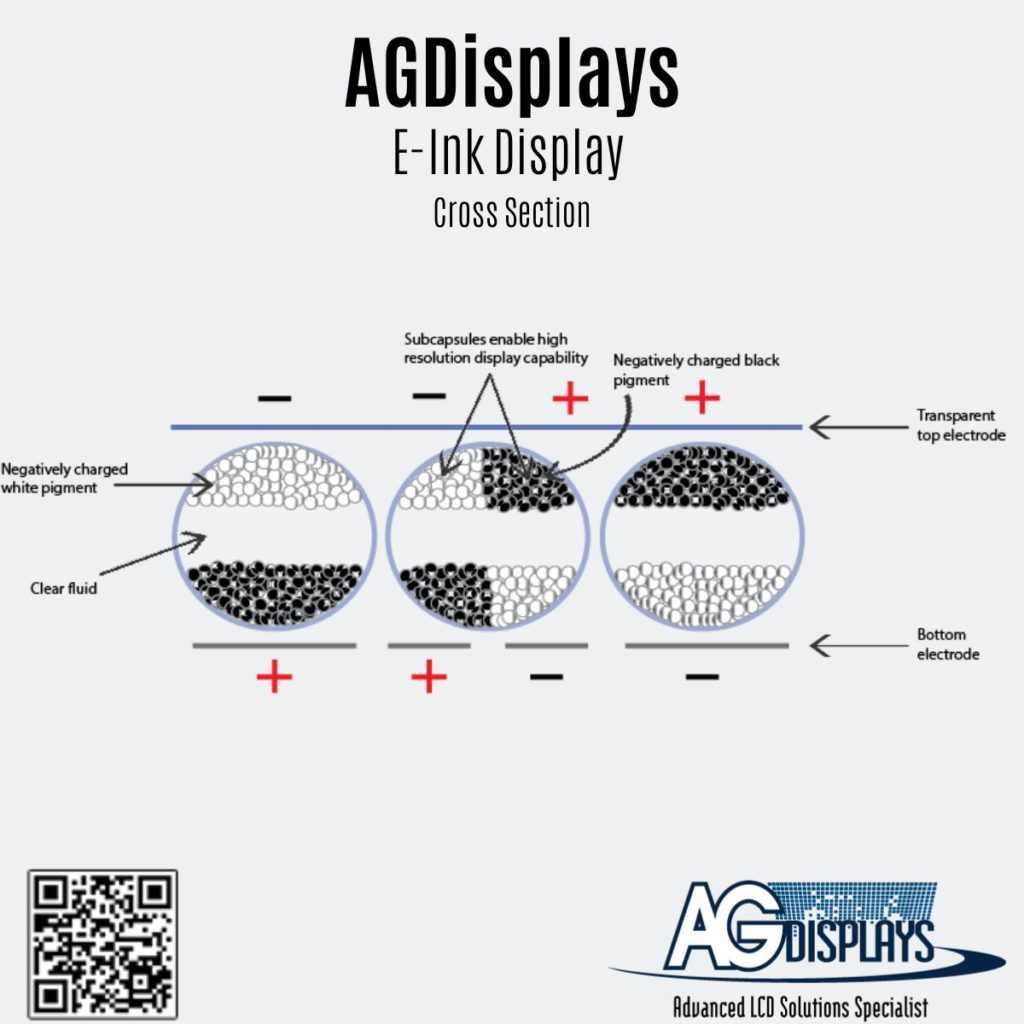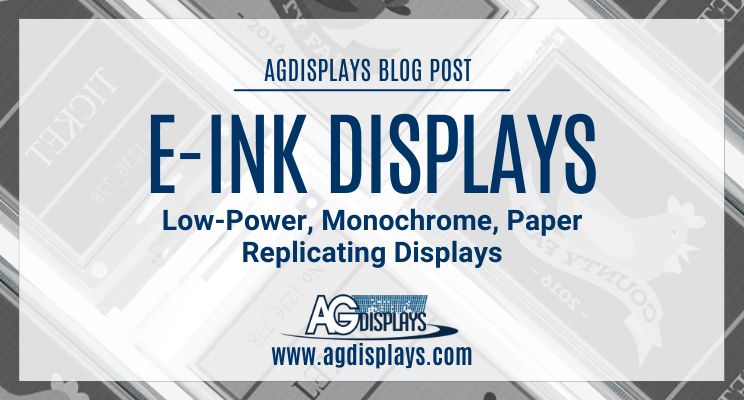What Is E-Ink?
E-Ink is a unique form of display technology that incorporates the classic look of traditional printed paper, with the re-useability of an LCD screen. Whether it is called E-ink, E-paper, or EPD, they all refer to same thing: electrophoretic displays. This type of display exhibits extraordinary capabilities, such as the ability to hold an image without requiring power, excellent sunlight readability, and crisp recreation of handwritten text. E-ink displays excel at mimicking the look of printed ink on paper, which makes them great at displaying text and images at high resolution. Because they are generally monochrome or greyscale in design, most E-Ink displays display black and white text & images. There are, however, tri-color and full color versions as well. The E-ink display is most recognizable as the main feature of the Amazon Kindle e-reader device, but E-ink displays can also be found on shelf labels, smart watches, thermostats, retail kiosks, e-books, and more applications.

How Does E-Ink Work?
While E-ink displays share a similar form and function to traditional LCDs, the two types of technology are quite different. An LCD works, in very basic terms, by illuminating a layer of pixels with an LED backlight. E-ink displays, however, use a film layer containing millions of tiny capsules that react to an electrical charge. Each capsule contains black and white pigment which rotate depending on the electrical signal received. Electrodes are placed on either side of the capsule filled film, and an electrical signal is sent to each individual electrode, causing the ink inside of the capsules to react. In general, white ink particles will carry a positive charge, and black particles will carry a negative charge. In operation, when a negative charge is applied to an electrode, black ink inside of the capsules will be forced to the top of the film, creating a black image on the surface of the display.

Are there Advantages to an E-ink Display?
Bi-stable Display Mode
One of the main selling points of an E-ink display is its absurdly low power consumption. One function of the display that supports its low power capability is the E-ink’s Bi-stable display operation. A Bi-stable display can hold an image indefinitely without the need for a continuous power source. Only when the display needs to refresh, does it draw the necessary power required to do so, making E-ink a highly efficient display solution. Compare this to a traditional LCD, which depending on the refresh rate, will need to cycle its power as many as 120 times per second. To picture how this works on an E-ink display, imagine that your e-reader device only draws power when you need to turn the page. You can still read your current page as studiously as you like, without ever consuming any energy at all. E-ink displays also receive an added longevity boost and an extended lifespan by avoiding the constant power draw necessary with other display technology.
Pure Reflective Mode
An E-ink display is completely reflective, meaning it uses no backlight for illumination. Although this means that E-ink cannot be used in the dark (without additional lighting hardware), it also means that the display will not be washed out in direct sunlight. Instead of an LED or CCFL backlight, E-ink displays use the environment’s ambient light, which reflects internally off of the back of the display, and emits out the front, at a contrast ratio that is up to 6x more than that of a standard LCD. This pure reflective ability contributes to the E-ink displays overall low power design. Because of this ability, you can often see E-ink displays in applications such as an E-ink street sign, which can be paired with a solar panel to provide enough energy to refresh the display. And, in cases of night time use, it is possible to pair an e-ink display with a low power, battery operated front light, or even a glow-in-the-dark phosphorescent overlay.
What are some E-ink Applications?
The most well-know E-ink application is a tablet like device called the e-reader (or e-book, or Kindle). E-ink displays can also be found on store shelves as electronic labels, as wearable devices such as watches and health monitors, on mobile phones, road signs, and digital signage, in advertising kiosks, automotive dashboards, and as auxiliary screens on laptops and smart devices. Because most E-ink displays are monochrome, and have an extremely low refresh rate, they are not well suited to displaying moving images, so any application showing fast moving videos, or applications such as mobile games, or picture/video editing programs are not found on E-ink devices.

Is there a Future for E-ink Displays?
A few color E-ink displays are already in production, using a different methods to achieve their color variations. The most common color E-ink variation is the tri-color E-ink which adds an additional pigment along side the black and white ink capsules, usually either red or yellow. The E-ink display then functions the same as a monochrome version, using electrical signals to control the colors separately. Four color e-ink allows for a much wider color gamut, as the colors used; cyan, magenta, yellow, and black, can be mixed to create CMYK color combinations closer to a traditional LCD. Of course, with more ink colors, comes more electrodes, and more processing needed for control, so there is an overall increase in power consumption. Another way of achieving color with an E-ink display is with the use of a color filtering overlay. An RGB filter layer can turn the reflected light from white ink inside of the display into red, green, and blue subpixels, allowing for traditional RGB color mixing. The addition of a filter, however, reduces the reflectivity and overall resolution of the E-Ink display.
Other emerging trends for E-ink displays are foldable technologies, which could result in smaller, more portable devices, such as an e-book that closes like a real book, and new attempts to create a high-refresh rate E-ink displays, with more attempts at displaying moving videos and advertisements. Deeper and more realistic colors are also on the horizon for the latest E-ink displays, continuing the trend of bringing E-ink technology more in line with the capabilities of LCD or OLED.

For more…
For more information of E-ink displays, and other types of LCD adjacent technology, such as character displays, transparent displays, OLEDs and more, please visit our website www.agdisplays.com

